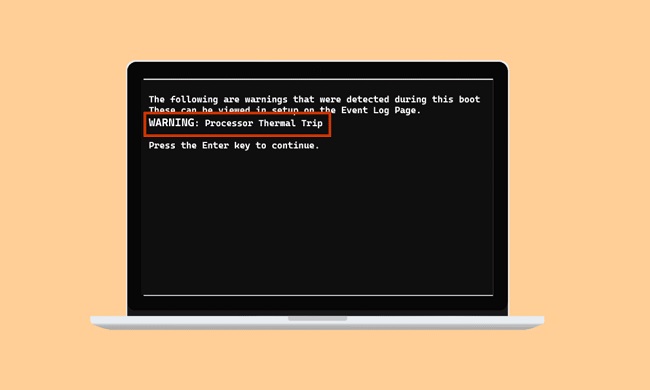When a computer is shut down unexpectedly because the CPU has become too hot, the error message “Processor thermal trip faults” is displayed. Every computer has its own cooling system to keep the processor from overheating.
The kernel will exit if the CPU temperature reaches an unsafe level.

Contents
Core Temperature Verification
To determine the temperature of your CPU, you can install a programme like “Core Temp” and keep an eye on it in real time if this problem only occurs sometimes rather than constantly.
If the thermometer reads over 80 degrees, we may safely assume that the cooling system is malfunctioning and move on to the troubleshooting steps.
- Follow this link to Core Temp’s official site, where you can get the programme and save it to your computer.
- Please start the programme after installation is complete. To the right of each CPU core is its current temperature. The temperature can be pinned to the taskbar so that you can keep an eye on it even as you go about your day.
If the temperature is higher than the specified limits, continue with the troubleshooting steps that follow.
Method 1: Preventing Overclocking
Overclocking, as previously discussed, involves temporarily increasing the processor’s clock rate over its typical working value in order to achieve higher processing speeds. Until a certain temperature is reached, a typical 2.5 GHz processor may operate at 3.0 GHz for a short period of time.
It is recommended that you turn it off entirely if you intend to overclock your computer. The overclocking programme should be responsible and shut down once it detects that overclocking has begun.
In the absence of this action, the CPU may overheat, shut down, and prevent you from using the computer. Turn off the overclocking feature and give the PC another shot.
Method 2: Make Sure The Ventilation Fans Are Working.
Making sure your computer is getting enough ventilation is the first step in improving the cooling system. Your computer will be forced to shut down with the message “Processor thermal trip fault” if dust prevents air from reaching the fans or if the machine is set up in a way that prevents airflow.
Remove any obstructions from the route of air to your computer’s fans by cleaning them thoroughly. If you have a tower, remove the top and dust off the vents and fans. Disassembling your laptop and cleaning its fans by hand is necessary.
Start up your computer once you’ve cleaned the fans to see whether the problem persists.
Method 3: Inspect The Thermal Compound And The Heat Sink
If the fans are properly venting the air but you are still receiving an error, the thermal paste on your processor may not have been applied properly. Using the fan mounted above, thermal paste functions as a cooling agent to substantially lower the temperature of your processor.
The agent won’t be able to keep the processor from overheating if the thermal paste isn’t applied properly.
Step 1: Carefully detach the fan nuts and lift the fan off the top of the processor to remove it.
Step 2: The refrigerant will be revealed now. Preparing a cooling agent in advance is a must. Spread the chemical around the surface of the CPU and apply it.
Step 3: Replace the computer’s cover and tighten the screws holding the fan in place atop the processor. You should hold off for a while so the coolant can do its job.
Step 4: Turn on your computer once more to see whether it fixed the problem.
You may check the current CPU temperature in real time by entering the BIOS settings if you are unable to get past the Windows logo. This tab is located in the Hardware monitor section. You can use this to determine if the air conditioner is functioning properly.






























